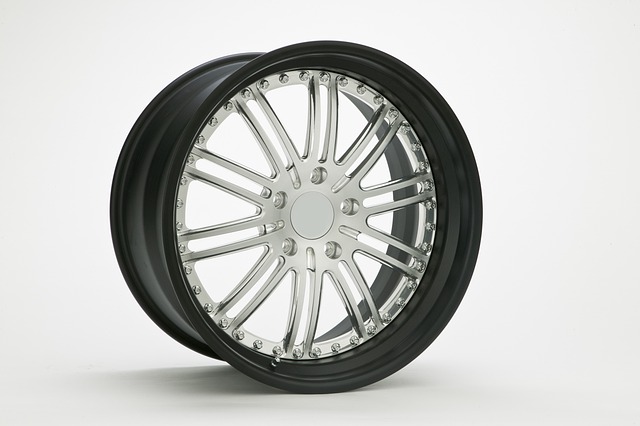Looking to register your car in California? This guide breaks down the process step-by-step, ensuring you’re prepared from start to finish. Understanding the state’s specific requirements is key, including the need for accurate Vehicle Identification Number (VIN) verification through a DMV-approved verifier. Gather essential documents, visit the Department of Motor Vehicles (DMV), and complete the registration process efficiently with this informative tutorial.
- Understand California Car Registration Requirements
- Gather Necessary Documents for Car Registration
- Visit the DMV to Register Your Vehicle
- Verify VIN (Vehicle Identification Number) Accuracy
- Pay Car Registration Fees and Receive License Plate
Understand California Car Registration Requirements

Before registering your car in California, it’s crucial to understand the state’s specific requirements. The California Department of Motor Vehicles (DMV) mandates several key steps and documents for a successful registration process. One essential component is ensuring your vehicle has a valid and accurate Vehicle Identification Number (VIN) verification. This involves checking the VIN against reliable sources like the DMV’s database or reputable third-party services to confirm its legitimacy.
Additionally, you’ll need to provide proof of insurance, complete necessary forms, and pay the registration fees. A mobile vin inspection or using a mobile vin verifier can streamline this process by allowing you to verify your car’s VIN quickly and conveniently. This step is vital as it helps prevent fraud and ensures that only legitimate vehicles are registered within the state.
Gather Necessary Documents for Car Registration

Before you begin the registration process, ensure you have all the required documents ready. The California Department of Motor Vehicles (DMV) requires specific paperwork to verify your vehicle’s identity and ownership. One crucial document is the Vehicle Identification Number (VIN) verifier, which can be obtained through a mobile VIN inspection or by using an online tool provided by the DMV. This unique number is essential for tracking vehicle history and ensuring all records are accurate.
Additionally, you’ll need proof of ownership, typically in the form of a certificate of sale or purchase agreement, along with valid identification documents like a driver’s license or state ID card. It’s also beneficial to have insurance information handy, as proof of current insurance coverage is generally required during registration. With these essential documents gathered, you’re well-prepared to navigate the car registration process smoothly.
Visit the DMV to Register Your Vehicle

To officially register your vehicle in California, a visit to the DMV is an essential step. Bring all necessary documents, including proof of ownership, vehicle identification number (VIN), and any relevant registration records from previous states. The DMV will verify the VIN using their systems and ensure the vehicle meets all safety and environmental standards.
During this process, consider opting for a mobile VIN inspection or using a vin inspection service to streamline things further. These options can save time and provide added convenience, especially if you’re busy or have difficulty making it to the DMV in person. A mobile vin verifier can quickly validate the vehicle’s history and specifications, ensuring a smoother registration experience.
Verify VIN (Vehicle Identification Number) Accuracy

Before registering your car in California, it’s crucial to ensure the Vehicle Identification Number (VIN) is accurate and valid. The VIN serves as a unique fingerprint for your vehicle, critical for identifying its make, model, year, and other specifications. Misspelled or incorrect VINs can lead to registration delays or even rejection. Luckily, there are tools available to help you verify the VIN’s authenticity, such as a DMV vin verifier or mobile vin verification services.
These services often involve a simple process where you input the VIN and receive instant validation through text or an app. Some even offer vin inspection options, allowing you to check for any discrepancies or potential scams. Ensuring your VIN is correct is a vital step in the registration process, streamlining it and setting a solid foundation for ownership.
Pay Car Registration Fees and Receive License Plate

After confirming your car’s ownership and identity through a process like the DMV VIN verifier or a mobile VIN verification service, it’s time to pay the registration fees. These fees vary based on vehicle type and age, so be sure to check the California DMV website for up-to-date information. You can typically pay online, by mail, or in person at a local DMV office. Once your payment is processed, you’ll receive your license plates. These plates are essential not only for legal registration but also for displaying your vehicle’s identification number (VIN), which is crucial for tracking and identifying your car.
Ensure that you display the license plates properly on your vehicle as per California state laws. This step completes the registration process, making your car legally registered and ready for use on public roads. Remember, a valid registration and current license plates are essential for safety, law compliance, and potential insurance claims.
Registering a car in California is a straightforward process once you understand the requirements and gather the necessary documents. By visiting your local DMV, verifying your Vehicle Identification Number (VIN) accuracy, and paying the associated fees, you’ll be on your way to receiving your new license plate. Remember to keep your registration up-to-date to avoid any penalties and ensure a smooth driving experience. Utilize a trusted dmv vin verifier to maintain accurate records throughout the process.
